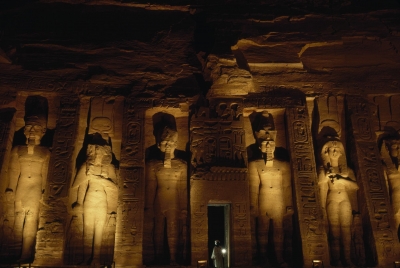
As ancient Egyptian rulers, pharaohs were both the heads of state and the religious leaders of their people. The word “pharaoh” means “Great House,” a reference to the palace where the pharaoh resides. While early Egyptian rulers were called “kings,” over time, the name “pharaoh” stuck.
As the religious leader of the Egyptians, the pharaoh was considered the divine intermediary between the gods and Egyptians. Maintaining religious harmony and participating in ceremonies were part of the pharaoh’s role as head of the religion. As a statesman, the pharaoh made laws, waged war, collected taxes, and oversaw all the land in Egypt (which was owned by the pharaoh).
Many scholars believe the first pharaoh was Narmer, also called Menes. Though there is some debate among experts, many believe he was the first ruler to unite upper and lower Egypt (this is why pharaohs hold the title of “lord of two lands”). Pharaohs were typically male, although there were some noteworthy female leaders, like Hatshepsut and Cleopatra. Hatshepsut, in particular, was a successful ruler, but many inscriptions and monuments about her were destroyed after her death—perhaps to stop future women from becoming pharaohs.
After their deaths, many pharaohs were entombed and surrounded by riches they were meant to use in the afterlife. Explorers and archaeologists have discovered these tombs and learned a great deal about ancient Egyptian society from them. One very famous example was in 1922 when archaeologist Howard Carter discovered the tomb of King Tutankhamen, a pharaoh who died when he was only nineteen.
Credit : National Geographic Society
Picture Credit : Google




